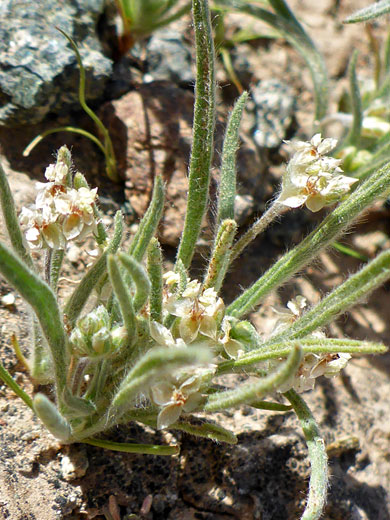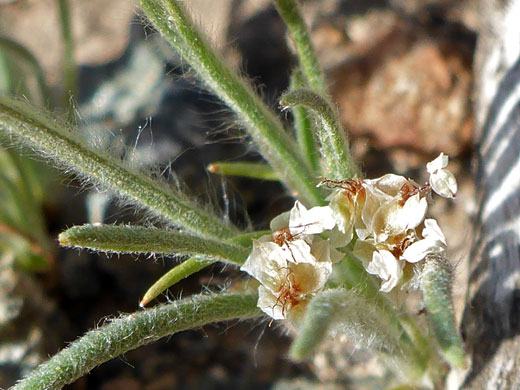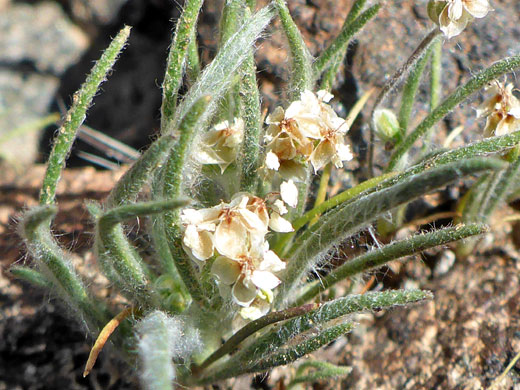
Clustered flowers and hairy leaves; plantago ovata, Bristol Mountains, Mojave Trails National Monument, California
Common names:
Desert plantain, desert indianwheat
Family:
Scientific name:
Plantago ovata
Main flower color:
Range:
Arizona, south and central California, south Nevada , far southwest Utah and the Big Bend area of Texas
Height:
Up to 10 inches
Habitat:
Rocky slopes, desert flats, from sea level to 4,000 feet
Leaves:
Hairy, linear to narrowly oblong, up to 7 inches long
Season:
January to June
Plantago ovata might be an introduced US species, as it is most widespread across Asia. Plants are stemless; leaves and the flower stalks grow from the base. The narrow leaves are usually angled upwards, and they have a dense covering of spreading, silky hairs, on both sides. Leaf margins are usually entire but may have a few tiny teeth. Flower stalks rise a little way above the leaves, and are similarly hairy. A single plant may produce several dozen stalks, up to ten inches tall.
The inflorescence is a spherical to slightly elongated cluster, occupying up to 2 inches at the top of the stem. Flowers consist of a green, deeply four-lobed calyx, a white to pale brown, four-lobed corolla, and four short stamens. Each flower is subtended by a thin bract. Some authorities recognize up to four varieties, based on differences in corolla and bract coloration.
The inflorescence is a spherical to slightly elongated cluster, occupying up to 2 inches at the top of the stem. Flowers consist of a green, deeply four-lobed calyx, a white to pale brown, four-lobed corolla, and four short stamens. Each flower is subtended by a thin bract. Some authorities recognize up to four varieties, based on differences in corolla and bract coloration.
All Contents © Copyright The American Southwest | Comments and Questions | Contribute | Site Map



